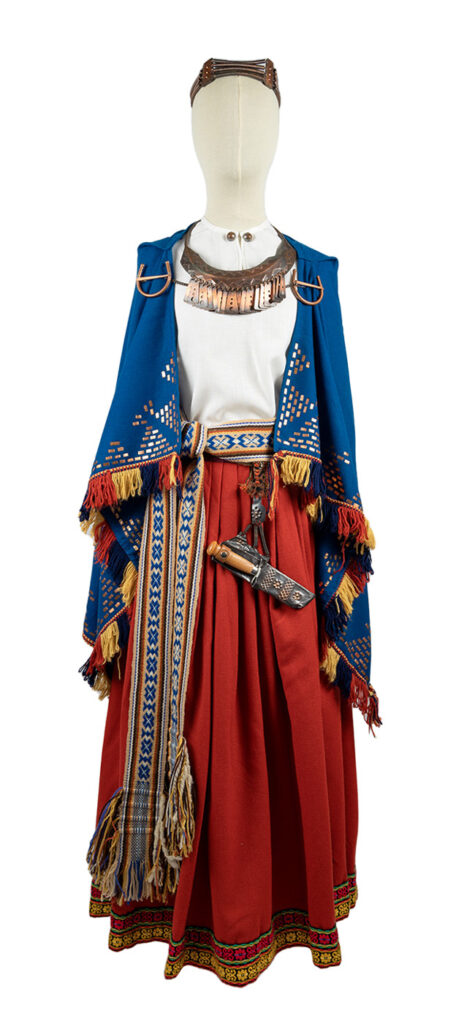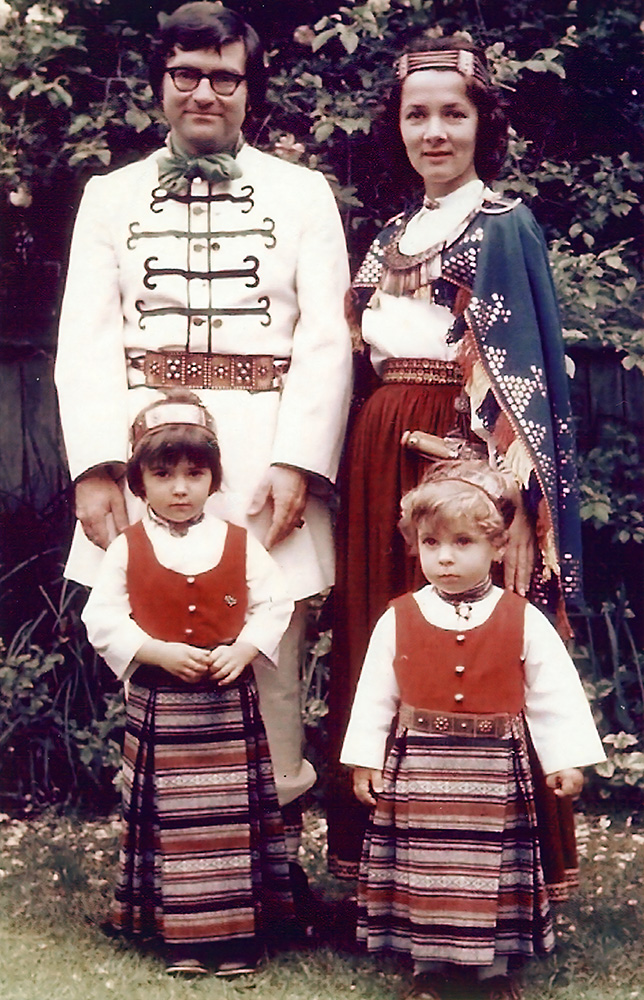Home > In Exile > Becoming a master folk costume maker > Folk costumes made by folk dance groups >Homemade Jewellery From Copper


Homemade Jewellery From Copper
Reproduction of an archaeological costume. Made in Canberra, Australia, in the 1970s.
This reproduction of a 12th-century costume was made by members of the “Sprigulītis” folk dance ensemble in Canberra. In the run-up to the opening of the Sydney Opera House, various ethnic groups living in Australia were invited to enter a competition to perform at this historic event. Māra Siksna recalls: “Knowing that we would be competing with the lively dancers of the southern nations, and the sumptuous silk and gold costumes of the eastern countries, director Skaidrīte Darius decided to highlight the long history of our dances and rituals. So was born the reckless idea of imitating a 12th-century Latgalian costume for four pairs of dancers.”
The archaeological costume reproductions and jewellery were made by the dancers themselves in the dining room of Māra’s house, using the more readily available copper instead of bronze. For example, the copper for the bracelets came from car batteries, while the penannular brooches were made from copper pipes bought from a plumbing shop. The costumes were made by learning and mastering new metalworking and handicraft techniques, as well as adapting them to the needs of the stage. This costume has been worn on many stages, including on the “Saules josta” folk dance ensemble’s tour to America, Canada, England, Germany and Sweden in 1976.
Donated by Māra Siksna and Skaidrīte Darius. From the collection of the Latvians Abroad Museum and Research Centre (LP2023.6.9-12, LP2023.112).
Siksna family in Canberra, Australia, 1973. Donated by Māra Siksna. From the collection of the Latvians Abroad Museum and Research Centre.

